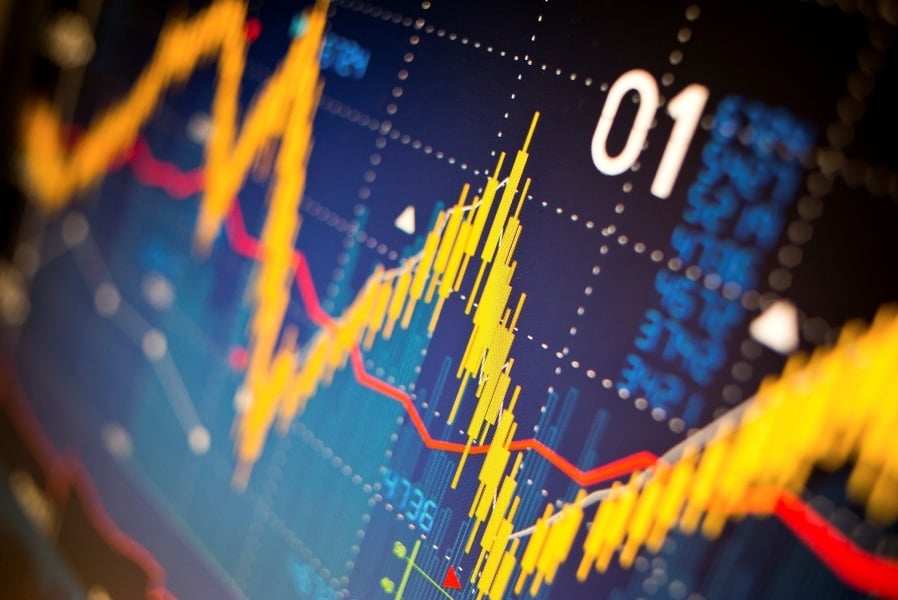

As the Biden administration ramps up for unprecedented levels of government spending, paired with sweeping tax hikes, market watchers are struggling to anticipate and measure the potential fallout.
While the financial markets so far have generally shrugged off the three consecutive spending plans from President Joe Biden that combine to exceed $6 trillion, those charged with assessing such gargantuan proposals say there is cause for concern.
“There is certainly a fear that the spending will lead to higher inflation, even though there is no doubt the U.S. infrastructure could stand a great wash and press and modernization,” said Cameron Brandt, director of research at EPFR Global.
While Brandt gave the Biden administration credit for providing stimulus checks and spending programs “targeted at groups with a higher propensity to spend,” he wondered, “Are we buying the [economic] rebound or laying the foundation for a sustained recovery?”
Brandt joined a panel of financial markets and global economics experts last week to assess the current economic environment in the context of government efforts to push agendas while trying to prop up economies ravaged by pandemic-induced shutdowns.
Ryan Nauman, market strategist at Zephyr, said companies have started to benefit from pent-up demand as more people are vaccinated and businesses start to reopen.
“Upward revisions to [earnings] expectations continue to increase, but actions speak louder than words,” he said. “The fact that banks have reduced their loan provisions suggests they think the worst is behind us.”
Meanwhile, Biden’s sweeping tax proposals related to capital gains, estate taxes and corporate taxes have the potential to put the markets in a holding pattern until more clarity is provided, Nauman said.
“From a tax standpoint, that’s what we’re seeing in markets; they’ve traded sideways,” he said. “The markets have priced in a strong economic recovery and earnings, but the markets are uncertain about what Biden’s policies will mean for taxes.”
Shankar Ramakrishnan, senior bonds editor at Informa Global Markets, is bullish on risk assets against the backdrop of record-level stimulus programs and a lessening threat from Covid.
“There’s a lot of herd immunity building in the U.S. and people are getting over their fear of the virus, and authorities are talking about opening up,” Ramakrishnan said. “At this point, the performance of all risk assets should be very good.”
Even with a steady flow of stimulus checks and higher unemployment benefits still being distributed by the government, Ramakrishnan believes investors in general are being prudent.
“So far, I think investors are quite disciplined and people are very careful about how they approach companies,” he added. “Investors have become more sophisticated and have learned lessons. They’re not supporting everything.”
Brandt was not in complete agreement with Ramakrishnan on the risk outlook.
“While people are reluctant to fight the Fed, they certainly don’t believe the Fed when it comes to inflation,” he said, citing an increased appetite for floating-rate funds as a sign of growing inflation fears.
“People have money to spend but finding stuff in stores is getting more difficult these days,” Brandt added. “There are supply issues and rising incomes. If prices didn’t go up quite sharply, I’d be surprised.”
Ramakrishnan, by contrast, does not see inflation as a big threat.
“I kind of believe what the Fed is saying, that there won’t be a major spike in inflation; it seems like it will be transitory,” he said. “I don’t see companies being able to push much higher prices down to consumers. This is a stimulus-driven economy and people are looking to spend.”
Jonathan Cavenagh, senior markets strategist at Informa Global Markets, warned against comparing the current economic scenario to past cycles.
“A lot of people are grappling with this at this moment,” Cavenagh said. “Previous cycles might not be the best way to look at this potential U.S. inflation spike. The question is, how will the Fed respond? If they continue to say [inflation] is just a blip, that will undermine the U.S. dollar and drive real rates into negative territory. Getting further behind the inflation curve means more work down the track.”
In terms of risks and opportunities in the context of the current economic scenario, Nauman prefers Treasury inflation-protected securities and floating-rate debt as “classic inflation hedges.”
“On the equity side, financials would benefit from inflation,” he added. “One of the better opportunities are small-cap stocks, because they tend to outperform during inflationary periods.”
Brandt prefers a contrarian strategy related to Covid.
“The pent-up demand gets even more pent up the worse your Covid story is,” he said. “That means Europe, India and parts of Latin America will provide some very interesting short-term opportunities over the next few months.”
On the risk side, Cavenagh said a big potential threat would be a faltering vaccine rollout, “or if we don’t really see it helping to develop herd immunities and countries need to go back into lockdown.”
“The other risk is if we do see a much more aggressive inflation shock, forcing the Fed to get more aggressive in terms of its timetable of winding back policy support,” he added. “That will spill over into a lot of other asset classes and drive a meaningful bounce in the dollar.”

The 25-year industry veteran previously in charge of the Wall Street bank's advisor recruitment efforts is now fulfilling a similar role at a rival firm.

Former Northwestern Mutual advisors join firm for independence.

Executives from LPL Financial, Cresset Partners hired for key roles.

Geopolitical tension has been managed well by the markets.

December cut is still a possiblity.
Streamline your outreach with Aidentified's AI-driven solutions
This season’s market volatility: Positioning for rate relief, income growth and the AI rebound
